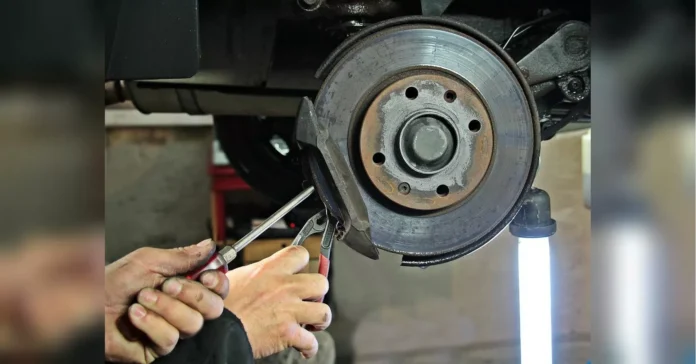Parking brakes, also known as emergency brakes or handbrakes, are an essential component of any vehicle. They are designed to hold a parked vehicle in place and provide an extra layer of safety in case the main brakes fail. However, there is a common misconception that parking brakes can be used as a substitute for the main brakes in certain situations. This is a dangerous misconception that can lead to serious accidents and should be addressed. In this article, we will discuss why parking brakes or contact braking should be used with caution.
First and foremost, it is important to understand the purpose of parking brakes. They are primarily intended for use when a vehicle is parked. When a vehicle is parked, the main brakes are not engaged, and the weight of the vehicle is resting on the transmission and the parking pawl. This can put a lot of stress on these components, and over time, they can wear out and fail. Parking brakes help to alleviate this stress by holding the vehicle in place, reducing the strain on the transmission and parking pawl.
However, some drivers mistakenly believe that parking brakes can be used as a substitute for the main brakes in certain situations, such as when driving downhill or in heavy traffic. This is a dangerous misconception that can have serious consequences. Parking brakes are not designed to be used while driving, and attempting to do so can cause damage to the vehicle and put the driver and others on the road at risk.
One of the main reasons why parking brakes should be used with caution is the fact that they are not as effective as the main brakes. Parking brakes are typically only engaged on the rear wheels of a vehicle, while the main brakes are responsible for stopping all four wheels. This means that using the parking brake while driving can result in uneven braking, which can cause the vehicle to lose control and potentially lead to an accident.
Furthermore, parking brakes are often less powerful than the main brakes. This is because they are designed to hold a parked vehicle in place, not to bring a moving vehicle to a stop. Attempting to use the parking brake as a substitute for the main brakes can result in longer stopping distances and increase the risk of a collision.
Another important factor to consider is the location of the parking brake lever or button. In most vehicles, the parking brake is located in a different position than the main brake pedal. This means that if a driver attempts to use the parking brake while driving, they may have to take their foot off the main brake pedal, which can delay their reaction time and increase the risk of an accident.
It is also worth noting that using the parking brake while driving can cause excessive wear and tear on the brake system. This can lead to costly repairs and replacements, and in some cases, it may even compromise the safety of the vehicle.
In addition to the potential dangers of using parking brakes while driving, it is also important to remember that they are not intended for prolonged use. When a vehicle is parked, the parking brake should be engaged, but it should be released before driving. Leaving the parking brake engaged while driving can cause it to overheat and wear out, which can lead to failure when it is needed most.
In conclusion, parking brakes or contact braking should be used with caution and only for their intended purpose – holding a parked vehicle in place. Attempting to use them as a substitute for the main brakes while driving can have serious consequences and should be avoided. Drivers should always rely on the main brakes for stopping and use the parking brake only when parking. By understanding the limitations of parking brakes and using them correctly, drivers can ensure their own safety and the safety of others on the road.

